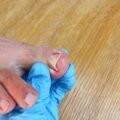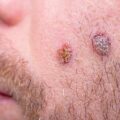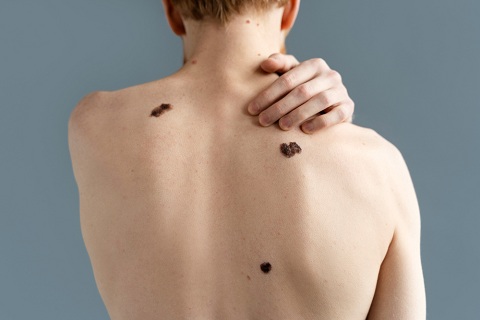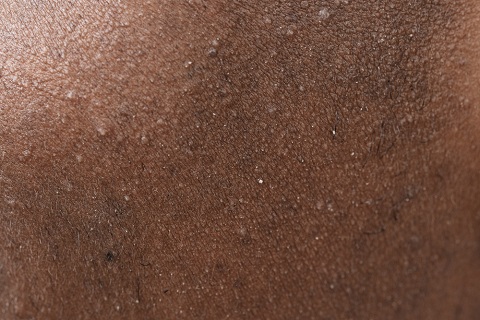Tinea manuum, commonly known as ringworm of the hand, is a fungal infection that affects the hands. Palms are affected asymmetrically, dry powdery scaling develops. It is usually occurs in association with tinea pedis (athlete’s foot) or tinea corporis (ringworm of the body), it can still cause discomfort and irritation to those affected.
What Causes Tinea Manuum?
Tinea manuum is typically caused by dermatophyte fungi, similar to those responsible for other types of ringworm infections. T. rubrum is the commonest cause for this condition, with E. fluccosum, T mentagrophytes var. interdigitale, T. violaceum and T. mentagrophytes var. erinacei involved in a few cases. These fungi thrive in warm, moist environments, making hands susceptible to infection, especially in individuals who frequently sweat or have compromised immune systems.
Sometimes the spread can occur via animals or from a pre-existing foot infection with or without toenail involvement. Poor peripheral circulation and tylosis are other possible predisposing factors to it.
Symptoms of Tinea Manuum
Symptoms of tinea manuum may include redness, itching, and scaling on the palms, between the fingers, or on the backs of the hands. In some cases, blisters or sores may develop. The infection can spread to the fingernails, causing them to become thickened or discolored.
Diagnosis of Tinea Manuum
Diagnosing tinea manuum typically involves a physical examination by a healthcare professional. They may also take a skin scraping or nail sample to examine under a microscope or send for further testing to confirm the presence of fungal infection.
Home Remedies for Tinea Manuum
In addition to medical treatment, there are several home remedies that may help alleviate symptoms and aid in the healing process. These include keeping the affected area unilateral involvement of a palm is seen which becomes dry and hyperkeratotic, with mild scaling, especially around the palmar creases, avoiding sharing personal items like towels or gloves, and wearing breathable fabrics to reduce moisture buildup.
Preventive Measures
To prevent tinea manuum and other fungal infections, it’s important to practice good hygiene habits, such as washing hands regularly with soap and water, drying them thoroughly after washing for long time, and avoiding prolonged exposure to damp environments.
Complications Associated with Tinea Manuum
While tinea manuum is generally not considered a serious condition, complications can occur if the infection is left untreated or if it spreads to other parts of the body. These may include secondary bacterial infections or chronic skin inflammation. The main problem of this disease is that there is a tendency to get it from other people’s usable things in one’s house.
Tinea Manuum in Children

Children are also susceptible to tinea manuum, particularly if they frequently participate in activities that involve close contact with others or shared equipment, such as sports or childcare settings. Parents should be vigilant for signs of infection and seek prompt medical attention if necessary.
When to See a Doctor
If symptoms of tinea manuum persist despite home treatment or if they worsen over time, it’s important to consult a healthcare professional for further evaluation and treatment. Additionally, individuals with weakened immune systems or underlying medical conditions should seek medical advice promptly.
Living with Tinea Manuum
Living with tinea manuum can be challenging, as the infection may cause discomfort and embarrassment. Prompt treatment of tinea pedis (since tinea manuum is directly related to the level of tinea pedis in the society)and the use of separate towels is necessary to control the spread of this condition. However, with proper treatment and preventive measures, most cases can be effectively managed, allowing individuals to resume their normal activities.
Frequently Asked Questions about Tinea Manuum
Yes, if left untreated, tinea manuum can spread to other areas of the body or to other individuals through direct contact or sharing of personal items.
While tinea can be effectively treated and symptoms may disappear, it’s possible for the infection to recur, especially if preventive measures are not taken. With proper treatment and hygiene practices, the risk of recurrence can be minimized, but it may not be possible to completely eradicate the fungi from the body.
Tinea may resolve on its own in some cases, particularly if it’s a mild infection and the immune system is able to fight off the fungus. However, for many individuals, medical treatment is necessary to effectively eliminate the infection and prevent it from spreading or recurring.
The healing time for tinea can vary depending on the severity of the infection, the type of treatment used, and individual factors such as immune function and hygiene practices. In general, with proper treatment, symptoms of tinea may begin to improve within a few days to weeks, but it may take several weeks or longer for the infection to fully resolve.
If tinea is left untreated, it can persist and spread to other areas of the body or to other individuals. In some cases, untreated tinea may lead to complications such as secondary bacterial infections, chronic skin inflammation, or damage to the nails. It’s important to seek medical attention for tinea to prevent these potential complications.
Conclusion
Tinea manuum is a fungal infection of the hands that can cause discomfort and irritation. While it is generally not serious, prompt diagnosis and treatment are essential to prevent complications and minimize the impact on daily life. By practicing good hygiene habits and seeking medical attention when necessary, individuals can effectively manage tinea manuum and reduce the risk of recurrence.





